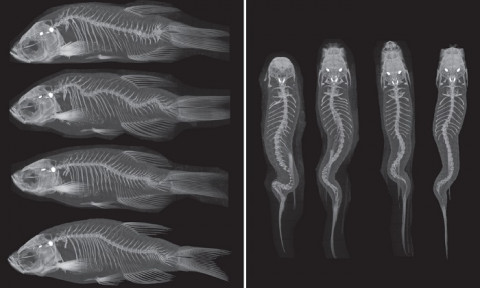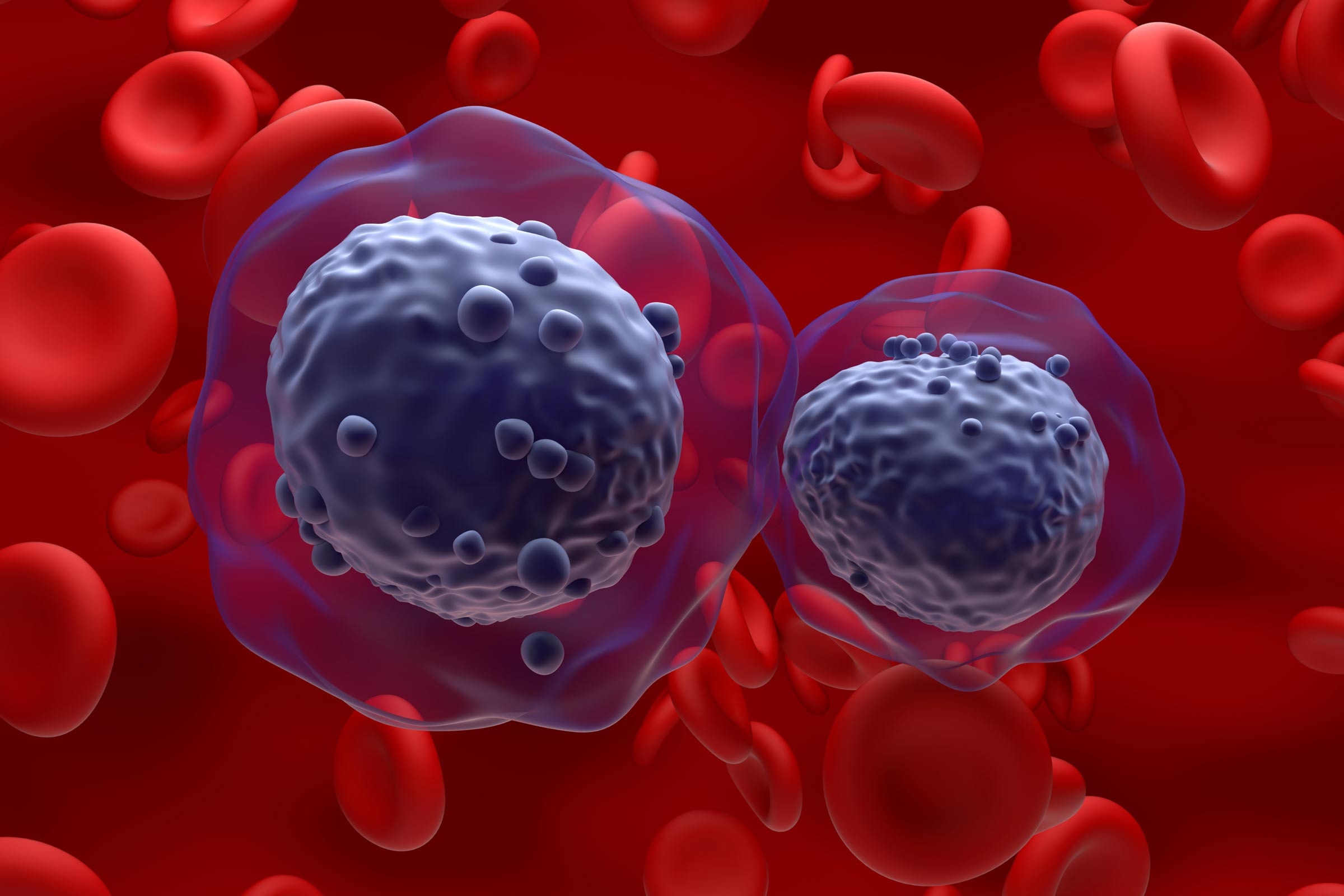Researchers Discover Genetic Mechanism Behind Scoliosis in Fish
Finding could shed light on spinal condition.

MicroCT images of lateral (left) and dorsal (right) views of representative scospondin mutant zerbafish. Images by Ronald Kwon and Adrian Mostad-Rios.
For about 100 years, scientists have known about the Reissner Fiber, an enigmatic structure inside the spinal canal of vertebrates. What they didn't know was exactly what role the Reissner Fiber played in the formation of the spine during different life stages and what influence it had on spinal conditions like scoliosis, a condition displaying atypical curvatures in the spine.
In a recent paper, researchers from The University of Texas at Austin have identified a genetic mechanism behind the formation of the Reissner Fiber and have been able to link the absence of the fiber to scoliosis in zebrafish.
Scoliosis is one of the most common spinal disorders, with about 3 percent of the human population classified as having idiopathic scoliosis. The genetic causes of this type of scoliosis remain elusive.
"We are really interested in the mechanisms that build the spine: the bones, the muscles, the nerves, everything," said Ryan Gray, a professor of Nutritional Sciences at The University of Texas at Austin.
Using a genetic screen in zebrafish, Gray and his team were able to identify two mutations affecting a protein, also found in humans, that is a major component of the Reissner Fiber. Previous studies have shown that if the gene that controls this protein is deleted, those zebrafish have severe curved, C-shaped bodies as embryos and fail to survive to adulthood.
"In contrast, the adult zebrafish with the mutations we identified survive to adulthood but have scoliosis, which looks a lot like idiopathic scoliosis in humans. In that, there are no malformations of the individual vertebrae, but the spines are curved," Gray said.
Using CRISPR gene editing techniques, Gray and his team, led by Ben Troutwine, engineered a fluorescent marker to the end of the protein that allowed for the first-of-its-kind visualization of the formation and dynamic properties of the Reissner Fiber in living animals.
"This allowed us to watch the fiber form in embryos, and when we looked in older fish we were able to see that the fiber is constantly treadmilling toward the tail tip, which had only been guessed at before," said Troutwine.
They used this technique to show that the Reissner fiber disassembles at the same time as the onset of scoliosis and this was a common phenomenon in several independent zebrafish lines, which get scoliosis.
"This is really exciting to us because what this tells us is that the Reissner Fiber seems to be really important for maintaining stability of the spine during development," Gray said. "We are getting at the cellular mechanisms, which inform the formation of the spinal column as a whole and help to regulate spine stability throughout the life cycle."
There is some debate about whether humans have a Reissner Fiber in their spinal canal, so the lab plans future research to study this process in a mouse model to learn more.
Benjamin R. Troutwine of the University of Texas at Austin Dell Medical School was the lead author of the paper. Mia J. Konjikusic and Ryoko Minowa of the University of Texas at Austin Dell Medical School, Paul Gontarz, Diane S. Sepich and Lilianna Solnica-Krezel of Washington University School of Medicine, and Adrian Monstad-Rios and Ronald Y. Kwon of the University of Washington contributed to the research.
The research was funded by Spinal Cord Injury/Disease Research Program, the Scoliosis Research Society and the National Institutes of Health.



